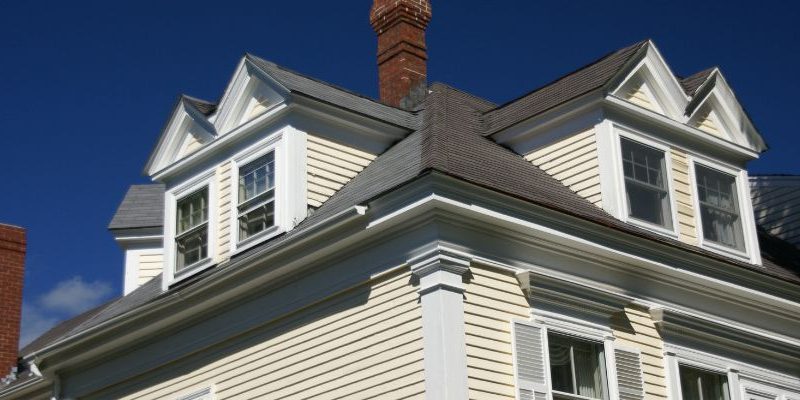Your home’s siding serves as its protective shield, shielding it from the elements while enhancing its aesthetic appeal. Over time, however, siding can deteriorate due to age, weather exposure, and other factors, necessitating replacement. At remodelntx, we understand the importance of maintaining a sturdy and visually appealing exterior. In this comprehensive guide, we’ll explore the telltale signs indicating it’s time to replace your siding and provide expert insights to help you make informed decisions for your home.
Table Of Content
Assessing the Condition of Your Siding
Visual Inspection
- Cracks and Warping: Inspect your siding for cracks, warping, or buckling, as these are clear indicators of deterioration. Over time, exposure to moisture, temperature fluctuations, and UV rays can cause siding materials to degrade, compromising their structural integrity.
- Fading and Discoloration: Noticeable fading or discoloration of your siding can be a sign of age and wear. This not only detracts from your home’s curb appeal but also suggests that the siding may no longer provide adequate protection against the elements.
- Mold, Mildew, and Rot: Excessive moisture buildup can lead to the growth of mold, mildew, and rot on your siding. These fungal infestations not only pose health risks but also compromise the integrity of the siding, making replacement necessary to prevent further damage.
Understanding Functional Issues
Energy Efficiency
- Increased Energy Bills: If you’ve noticed a sudden spike in your energy bills, it could be a sign that your siding is no longer providing adequate insulation. Damaged or deteriorating siding allows heat to escape in the winter and cool air to seep out in the summer, resulting in increased energy consumption and higher utility costs.
- Drafts and Air Leaks: Drafts or air leaks inside your home can indicate gaps or cracks in your siding, allowing outdoor air to infiltrate your living space. This not only compromises your comfort but also places added strain on your heating and cooling systems, reducing their efficiency and lifespan.
- Moisture Infiltration: Siding serves as a barrier against moisture infiltration, protecting your home from water damage and mold growth. If you’ve noticed signs of water damage or moisture buildup inside your home, such as peeling paint, warped wood, or musty odors, it may be time to replace your siding to prevent further structural damage.
Assessing Structural Integrity
Rot and Decay
- Soft or Spongy Areas: Press your fingertips against your siding to check for soft or spongy areas, which are indicative of underlying rot or decay. Rotting siding not only compromises the structural integrity of your home but also provides an entry point for pests such as termites and carpenter ants.
- Visible Damage: Inspect your siding for visible signs of damage, such as holes, dents, or missing pieces. These issues not only detract from your home’s appearance but also compromise its ability to withstand harsh weather conditions, leading to further damage over time.
- Loose or Detached Siding: Loose or detached siding panels are a clear indication of structural instability and should be addressed promptly to prevent further damage. In addition to compromising your home’s curb appeal, loose siding can also allow moisture to infiltrate your home, leading to mold growth and wood rot.
Exploring Replacement Options
Which Type of Siding is Best?
- Vinyl Siding: Known for its durability, versatility, and low maintenance requirements, vinyl siding is a popular choice among homeowners. Available in a wide range of colors and styles, vinyl siding offers excellent resistance to rot, moisture, and insect damage, making it an ideal option for long-lasting protection.
- Fiber Cement Siding: Made from a blend of cement, sand, and cellulose fibers, fiber cement siding offers exceptional durability and resistance to fire, moisture, and pests. It mimics the appearance of natural wood siding while providing superior performance and longevity, making it a favorite among homeowners seeking a low-maintenance alternative to traditional wood siding.
- Wood Siding: Despite the emergence of newer siding materials, wood siding remains a timeless choice valued for its natural beauty and charm. With proper maintenance, including regular painting or staining and sealing, wood siding can provide decades of reliable protection and enhance the aesthetic appeal of your home.
Choosing the Right Contractor
Selecting a Trusted Partner
- Experience and Expertise: Choose a contractor with extensive experience and expertise in siding installation and replacement. A reputable contractor will assess your home’s specific needs and recommend the most suitable siding options to meet your aesthetic preferences, budget, and performance requirements.
- Quality Materials and Craftsmanship: Ensure that your contractor uses high-quality materials and employs skilled craftsmen to ensure a seamless and durable siding installation. Attention to detail and precision are essential for achieving superior results and maximizing the lifespan of your new siding.
- Customer Satisfaction and Reviews: Research prospective contractors online and read reviews from past clients to gauge their reputation and customer satisfaction. Choose a contractor with a proven track record of delivering exceptional service and exceeding client expectations.
Final Wording
Your home’s siding is crucial for protection and aesthetics. When wondering which type of siding is best, consider factors like durability, maintenance, and style. Vinyl siding is a popular choice due to its durability and low maintenance. It comes in various colors and styles, offering versatility and longevity. Another option is fiber cement siding, known for its resistance to fire, moisture, and pests. It mimics the look of wood while being highly durable. Wood siding, despite requiring more maintenance, provides a classic and natural aesthetic that many homeowners appreciate. Ultimately, the best siding type depends on your preferences, budget, and the climate in your area.
FAQ’s
Repainting can enhance the appearance of your siding, but if it’s severely damaged or deteriorated, replacement may be a better long-term solution.
While DIY siding replacement is possible for some homeowners, it’s often a complex and labor-intensive task best left to professionals to ensure proper installation and minimize the risk of damage.
New siding materials often come with energy-efficient features that can improve insulation and reduce heat loss, leading to lower energy consumption and decreased environmental impact.
The duration of the siding replacement process depends on various factors, including the size of your home, the complexity of the project, and weather conditions. On average, it can take anywhere from a few days to a few weeks to complete.







